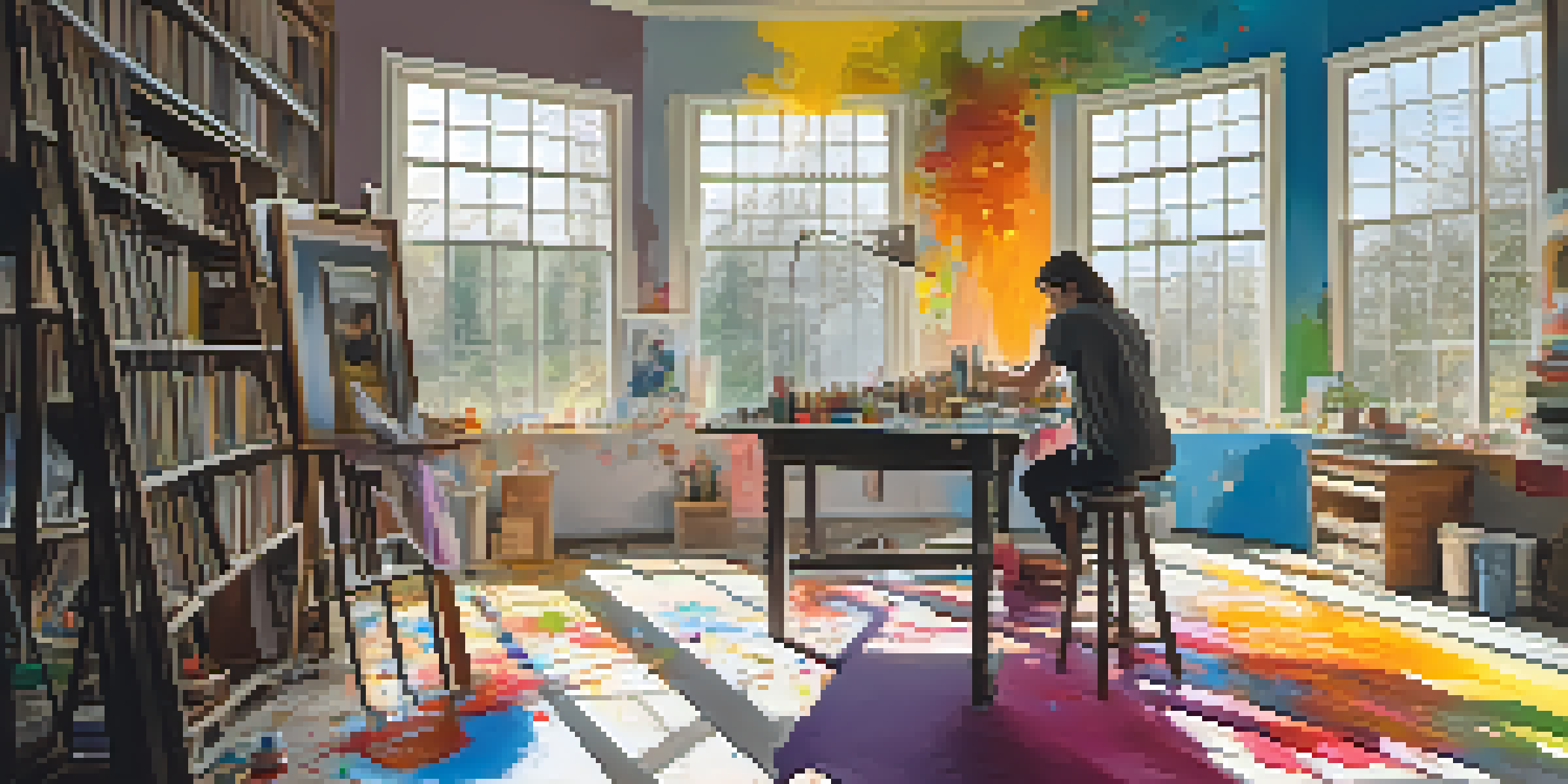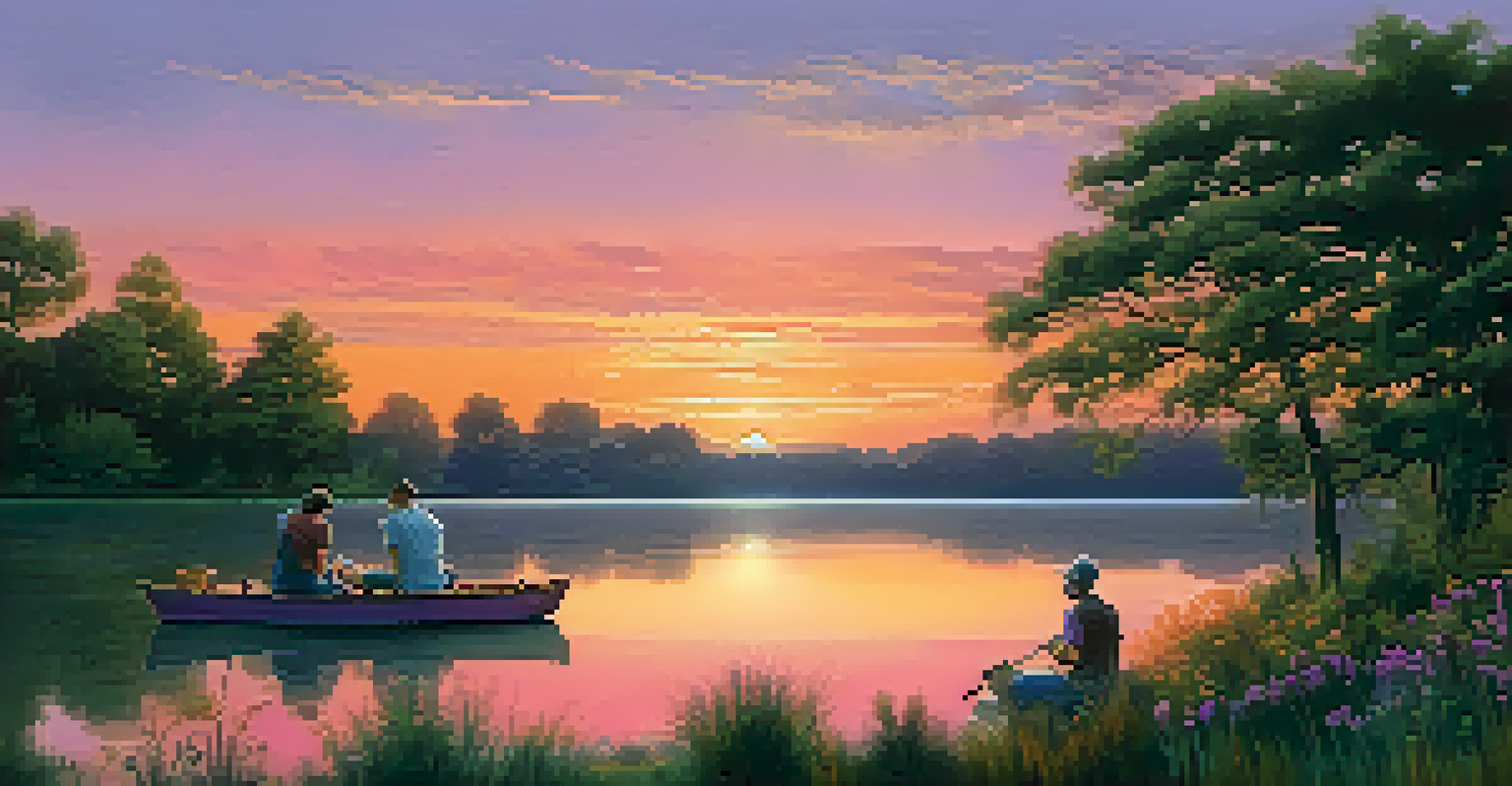The Science Behind Hallucinogens and Artistic Inspiration

Understanding Hallucinogens: A Brief Overview
Hallucinogens are substances that alter perception, mood, and various cognitive processes. They can be found in plants and fungi, like psilocybin mushrooms and peyote, as well as in synthetic forms. When consumed, these substances can lead to experiences that may seem surreal or dreamlike, often sparking curiosity about their effects on the mind.
The creative process is a process of surrender, not control.
The science behind hallucinogens involves complex interactions in the brain. For instance, substances like LSD and psilocybin primarily affect serotonin receptors, which play a key role in mood and perception. This alteration of brain chemistry can lead to profound changes in how individuals experience their surroundings, potentially enhancing creativity.
Many artists and musicians have turned to hallucinogens for inspiration throughout history. The idea is that these substances can break down conventional thought patterns, allowing for new perspectives and innovative ideas. This connection between hallucinogens and art is worth exploring to understand how they might unlock creative potential.
The Brain on Hallucinogens: A Closer Look
When hallucinogens enter the body, they interact with neurotransmitters in the brain, predominantly affecting the serotonin system. This interaction can lead to increased connectivity between different brain regions, which may result in a heightened state of awareness and creativity. It's like opening a floodgate of thoughts, emotions, and ideas.

Research shows that during hallucinogenic experiences, the brain exhibits unique activity patterns, often resembling those seen in dreaming or deep meditation. This shift can enable individuals to think outside the box, make unexpected connections, and envision new possibilities. Imagine your brain as a crowded room where everyone suddenly starts talking to each other; new ideas can emerge from these conversations.
Hallucinogens Enhance Creativity
Substances like LSD and psilocybin can alter brain chemistry, leading to increased connectivity and enhanced creative thinking.
This enhanced cognitive flexibility may explain why many artists find hallucinogens beneficial. By breaking down barriers to creativity, these substances can allow for a deeper exploration of artistic expression. It's not just about the experience itself but the potential for innovation that can arise from it.
Historical Context: Artists and Hallucinogens
Throughout history, many artists have turned to hallucinogens as a source of inspiration. For example, the famous painter Salvador Dalí openly experimented with various substances to enhance his creativity. His surrealist works often reflected the dreamlike states induced by hallucinogens, bridging the gap between reality and imagination.
The only thing that matters is that you are listening to your heart and following it wherever it leads you.
In the 1960s, counterculture movements embraced psychedelics, viewing them as tools for expanding consciousness. Musicians like The Beatles and Jimi Hendrix incorporated their experiences into their art, creating iconic pieces that resonated with a sense of exploration and liberation. These artistic endeavors often mirrored the transformative experiences that hallucinogens can evoke.
This historical context illustrates a long-standing relationship between hallucinogens and artistic expression. As artists continue to experiment with these substances, they contribute to a cultural narrative that challenges conventional boundaries and encourages innovative thinking.
Modern Research: Hallucinogens and Creativity
In recent years, scientific interest in hallucinogens has surged, leading to more research on their potential effects on creativity. Studies suggest that substances like psilocybin and LSD may enhance divergent thinking, a cognitive process essential for brainstorming and problem-solving. This has implications not only for artists but for anyone seeking to boost their creative output.
Researchers have noted that hallucinogens can facilitate a relaxed mental state, reducing anxiety and fear of failure. This psychological shift might allow individuals to explore ideas more freely, ultimately leading to greater creativity. It's akin to removing the constraints of a tightrope, letting creativity flow without hesitation.
Historical Ties to Artistic Expression
Many artists throughout history, including Salvador Dalí and The Beatles, have used hallucinogens to inspire their work and break conventional boundaries.
Modern studies emphasize the importance of set and setting—meaning the mindset of the individual and the environment in which they consume hallucinogens. When these factors align positively, the potential for creative breakthroughs increases, highlighting the delicate balance between substance use and artistic inspiration.
Personal Accounts: Artists Speak on Their Experiences
Many contemporary artists openly share their experiences with hallucinogens, often describing transformative moments that ignited their creative sparks. For instance, visual artists have reported experiencing vivid colors and intricate patterns that influence their work, leading to pieces that resonate deeply with viewers. These personal accounts provide insight into the subjective nature of creativity.
Musicians, too, have recounted how hallucinogens shaped their compositions. Some describe spontaneous jam sessions where the music seemed to flow effortlessly, as if guided by an unseen force. This connection between music and altered states can produce sounds that resonate with listeners on a profound level.
These personal narratives underscore the complexity of creativity and the various ways hallucinogens can inspire artistic expression. While individual experiences may differ, the common thread remains: hallucinogens can profoundly affect how artists perceive and create their work.
The Risks and Considerations of Using Hallucinogens
While hallucinogens can offer unique insights and inspiration, they also come with risks that shouldn't be overlooked. Individuals may experience adverse reactions, including anxiety or paranoia, which can hinder the creative process rather than enhance it. It's essential to approach these substances with caution and awareness.
Furthermore, the context in which hallucinogens are used plays a critical role in the outcome. Consuming them in a safe, supportive environment can lead to positive experiences, while negative settings can result in distressing trips. This highlights the importance of understanding one's mental state and surroundings before experimenting with these substances.
Risks of Hallucinogen Use
While hallucinogens can provide unique insights, they also pose risks such as anxiety and paranoia, necessitating a cautious approach.
Ultimately, artists and creators should weigh the potential benefits against the risks. While hallucinogens may open doors to new perspectives, it's crucial to prioritize mental health and safety in the pursuit of artistic inspiration.
Concluding Thoughts: Art, Hallucinogens, and Creativity
The relationship between hallucinogens and artistic inspiration is both fascinating and complex. These substances have the potential to unlock creative pathways, allowing artists to explore new realms of expression. Yet, this journey should be approached thoughtfully, considering both the benefits and the risks involved.
As research continues to unfold, we gain a deeper understanding of how hallucinogens can influence creativity. This knowledge may lead to more nuanced discussions about their role in the artistic process and the broader implications for mental health and well-being.

In the end, whether through personal experience or scientific inquiry, the conversation surrounding hallucinogens and art remains vibrant. By embracing this dialogue, we can appreciate the delicate interplay between mind, creativity, and the transformative power of these substances.